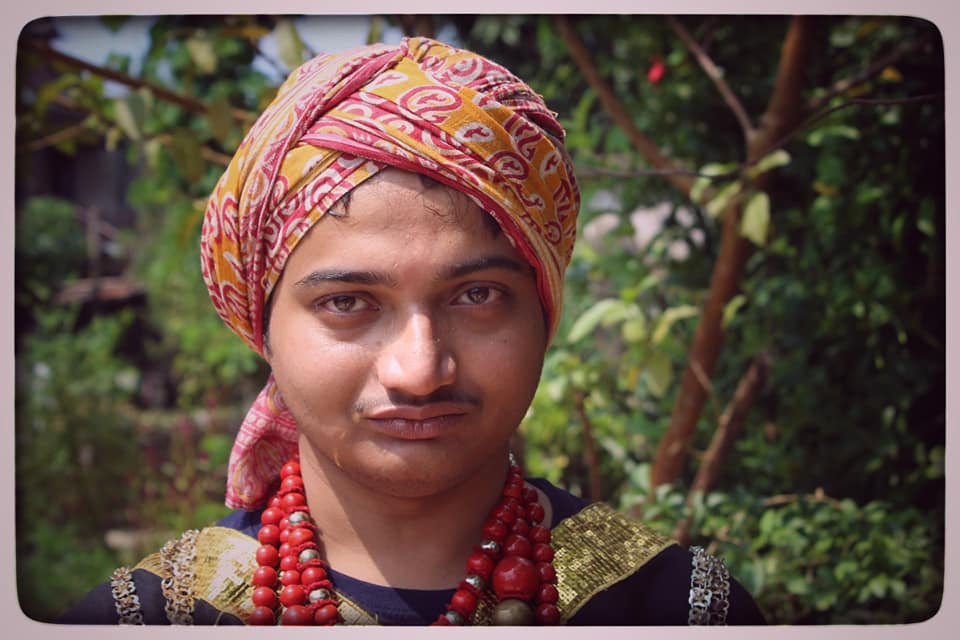Tibeto-Burman Kak-Borak, sometimes also called Tripuri, and Bangla are the main languages of Tripura.
Language is an important symbol of group consciousness and solidarity. In a pluralistic society such as ours, what is remarkable is not just the numbers and variety of dialects, but that each one of them reflects a distinctively definable community having distinctive traits, traditions, attitudes, beliefs, customs and habits. Sometimes a combination of dialects spoken in a homogenous territory having some common characteristic traits develops into a language. A language is conuction with culture, religion and history is an important component of nation formation. Its functional and symbolic value has far reaching significance in the transitional continuum from continuity to ethnicity to formalized nationality.
Empirical study on the basis of historical evidences show that no aboriginal tribal communities of Tripura had their own written script, all being in a form of colloquial expression. So, the rulers of Tripura had to look for a written language for the sake of administrative works. It is stated that Bengali, the flourishing language of the neighbouring plain, was adopted as the state language of Tripura.
Bengali always found a place of honour in the royal court of Tripura. Till the integratuion of Tripura with Independent India, Bengali had functioned as the official language of Tripura.It is understood that the Kings of Tripura had Bengali as the language of the royal family., by which a new culture among the tribal people could be witnessed. Later on, the tribal people of Tripura started to speak in Bengali instead of their mother tongue Kok-Borok. They seemed to be engaged in other Bengali cultural pursuits like literature, dance, music, rites and rituals.

Altogether there are nineteen tribes in Tripura speaking different languages, but the majority of them speak Kok-Borok language.
But linguistically, the tribes of Tripura can be divided into three groups :
Out of the total population of Tripura, the Kok-Borok speaking tribal communities occupy the majority. Out of the nineteen tribal communities, eight community viz. Tripuri, Reang, Noatia, Jamatia, Rupini, Koloi, Uchai and Murasing speak in Kok-Borok.
Other minor tribal communities of the state have also used the Kok-Borok language as a medium of communication. In the recent past, the Halam communities call the Kok-Borok – ‘RajaniKok’ (Language of the Kings). The Kok-Borok is the sister language of the Boro, Garo, Koch, etc of the North-East descending from the Tibetto-Burmese language family.
At present, the Kok-Borok language has been recognized as a language of literature. Therefore, it deserves a language of lively amplitude and distinctive originality. The linguistics are of the view that if the modern method of the linguistics is followed, then the development of this language is certain.
The first Kok-Borok magazine was published in the mid fifties. From the seventies, there is a continuity of development process and activities in creating Kok-Borok literature. Though, there is still dispute in matter of Kok-Borok scripts and spelling methods, the number of publication of Kok-Borok books on poems, short stories, novel, drama and books of translation are gradually increasing and has taken an important position.
The state government of Tripura has recognized Kok-Borok as one of the official languages of the state in AD 1979. The important government notifications, publicity booklets are being published in the Kok-Borok language along with Bengali. The Kok-Borok language was introduced as a medium of instruction for the Kok-Borok speaking students at the primary level about twenty years back and it has now been extended upto degree level classes.
Development of Kok-Borok language and Literature
www.tribaltoursinindia.com © All Rights Reserved, 2021